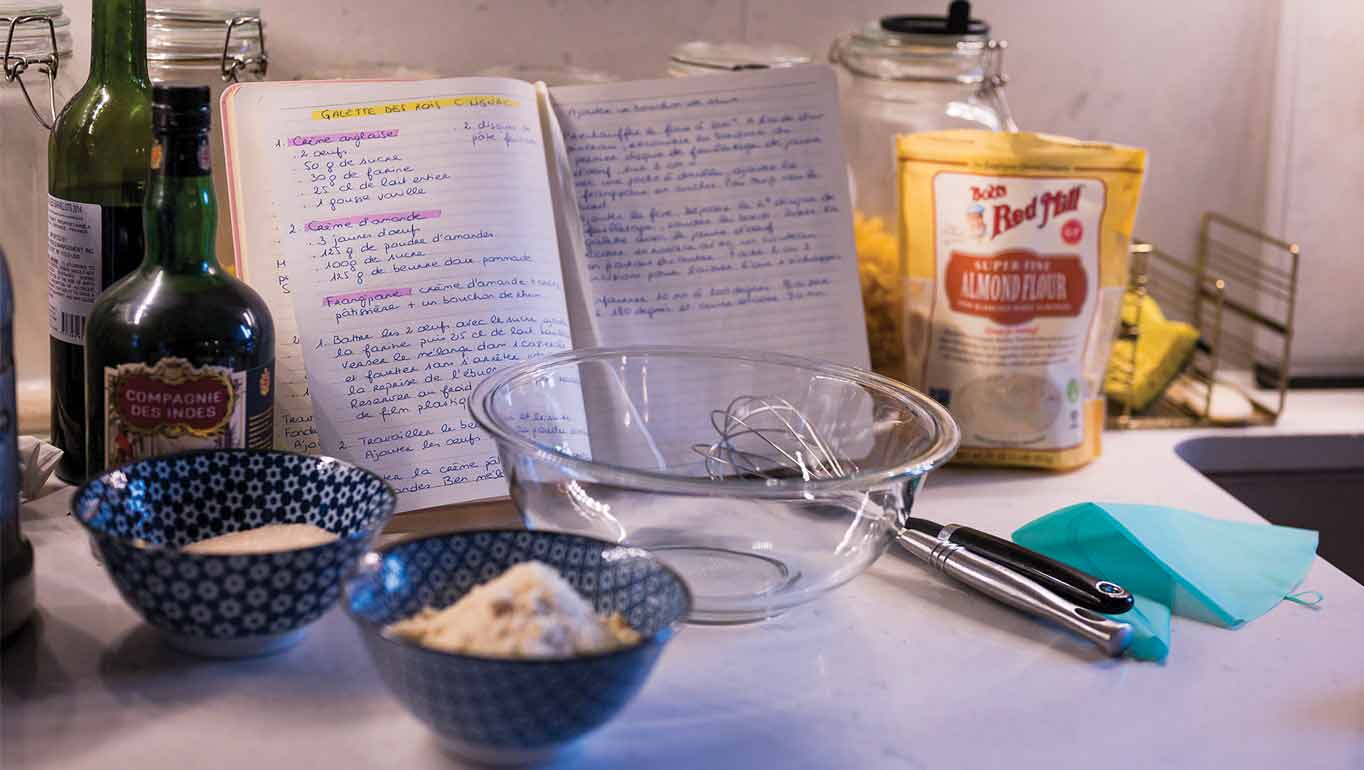For some people, winter festivities are synonymous with the December solstice and they light a fire in celebration. For others, celebrating the birth of Christ on 25 December is the main event by singing carols. For the people of France, however, Epiphany is the focus of seasonal revelry, when they celebrate the three Magi’s visit of Christ as a child with the all-important Cake of the Kings, or Galette des Rois.
The origins of France’s celebrations date back to Ancient Rome, and the meaning and rituals tied to the festivities continue to evolve to this day. During the Saturnalia festival, the Romans honored the god Saturn and celebrated the return of longer days with sweet foods. Slaves were freed for a day, and a “king” was selected at random from among them to rule over the festival. Later on, during the Middle Ages, a French group of Benedictines filled puff pastry with almond frangipane to celebrate the Three Kings’ visit to the Savior. Thus, the Galette des Rois was born. As time went on, the cake became a key fixture at the 17th century French court during the time of Epiphany . In a nod to the Roman tradition of naming a slave festival “king”, the French monarchs allowed noblewomen who found the fève, or porcelain trinket, in their slice to request services from the sovereign. However, mere decades later, the Galette was almost consigned to history when famine struck France in 1711. Paris ordered that all flour be used exclusively for the making of bread. Fortunately, clandestine baking of the Galette continued in the rural provinces and the custom survived. When the French Revolution came around it saw religion, the monarchy and the confection outlawed in 1791, evolution again, proved crucial to survival; the ‘Cake of the Kings’ became ‘Equality Cake’, and lived to see another day.
Thankfully, the Galette’s survival is safe once more, and today French people often gather several times throughout January to enjoy both the delicacy and the company of loved ones. In such celebrations, which tie together several strands of the cake’s history, the youngest member of the gathering crawls under the table and hands slices at random to the revelers. The person lucky enough to find the fève in their slice is declared King or Queen of the festivities and chooses a partner to be crowned “monarch” with and much mirth and merriment ensues.
For Valérie Coutarel, Chief of the French Interpretation Section in New York, continuing this tradition is even more important to her now that she lives 4,000 miles away from her homeland. As the smell of freshly baked galette wafts through her Manhattan apartment to the delight of friends and family around the table, the ocean between her and her loved ones seems somehow to vanish and she is, for but a moment, back home. Her 25-year-old daughter is equally eager to preserve the tradition – not least because Valérie makes sure she always gets the fève – along with the coveted crown – just like when she was small.
But finding the crucial ingredients stateside is no mean feat. The most difficult to source is high-quality puff pastry to encase the frangipane. “Whole Foods does sell it, but of course, it’s nowhere near as tasty as back home,” she says. Fiercely committed to her art, Valérie stashes tubes of the precious commodity in her luggage whenever she goes to France. She’s even been known to bring back traditional porcelain trinkets to use as the fève and crowns for the King and Queen. Nothing is too much trouble when it comes to recreating the tradition – and the magic – that connects her to her roots.
GALETTE DES ROIS adapted from a recipe by Cyril Lignac
For the crème pâtissière:
2 eggs
1/3 cup sugar
1/8 cup flour
1 cup whole milk
1 vanilla pod
For the crème d’amandes:
3 egg yolks
1 cup almond flour
1⁄2 cup sugar
1 stick and 2 tbsp of unsalted butter, softened
(The crème pâtissière and the crème d’amandes will be combined to make the frangipane filling.)
2 9 1⁄2 inch discs of puff pastry dough (from a 14–17-ounce package)
1 fève for the center.
1. Beat the two eggs together with the sugar, add in the flour, then pour in 25cl of boiling milk. Pour the mixture into a pan. Once the mixture has returned to the boil, add the vanilla and whisk for 3 minutes straight. Pour the mixture into a dish, cover with cling film and place in the fridge.
2. Combine the butter and the sugar. Mix in the eggs and the ground almonds.
3. Add the crème patissière to the almond crème. Whisk until smooth. Add a capful of rum.
4. Preheat the oven to 400°F. Take the first disc of puff pastry. Using a pastry brush, paint a ring of egg yolk around the edge. The ring should be approximately 2cm thick.
5. Put the frangipane in a piping bag. Pipe it in circles onto this same puff pastry disc. To avoid leakage, take care not to pipe too close to the edges.
6. Add the fève to the center of the disc, pressing it gently into the frangipane. Place the second puff pastry disc on the top and seal the edges together. Brush egg yolk over the galette. Using a knife, draw curved lines on the surface, radiating from the center to the edges. Make two or three incisions to allow the heat to escape during baking.




